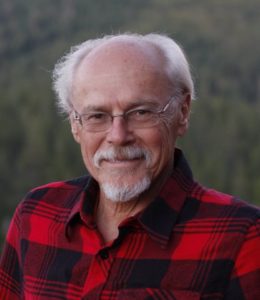
Glenn Borchard, Ph.D.
Photo Credit: Luis Lei
Glenn Borchardt, Ph.D.
Soil Tectonics
1966 Tice Valley Blvd. #172
Walnut Creek, CA 94595-2203
Voice/Cell: (510) VIA-SOIL
Phone: (510) 654-1619
E-mail: gborchardt@gmail.com
Web Site: www.soiltectonics.com
Certification: Certified Professional Soil Scientist (ARCPACS)
Specialties: Pedochronology, Soil Stratigraphy, Paleoseismology, Forensic Soil Science, Expert Witness
Soil Stratigrapher / Earthquake Hazard Specialist Dr. Borchardt is the Principal Soil Scientist for Soil Tectonics, located in Berkeley, California. Dr. Borchardt has a Ph.D. in Soil Mineralogy from Oregon State University, a M.S. in Clay Mineralogy from the University of Wisconsin, and a B.S. in Soil Science from the University of Wisconsin. Additionally, Dr. Borchardt is a Certified Professional Soil Scientist. He recently retired from the California Geological Survey.
I call my approach to paleoseismology “soil tectonics.” I combine field observation, soil and geomorphological description, and sampling with laboratory work involving mineralogical, physical, and chemical analyses to discover the relationships between faults and soils. The data are interpreted through perspectives gained from pedochronology, Quaternary stratigraphy, seismology, geodesy, as well as tectonics. Long term goals in this research include the determination of Holocene slip rates, dates of prehistoric events, recurrence intervals, and ultimately, predictions involving the date, magnitude, and location of future events. Soils are especially important in this work because evidence for the most recent activity usually involves the youngest geologic unit overlying a fault: the soil.
Check out the video introduction to our course on:
Soil Stratigraphy for Trench Logging




